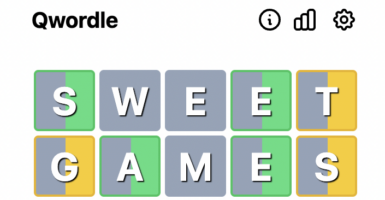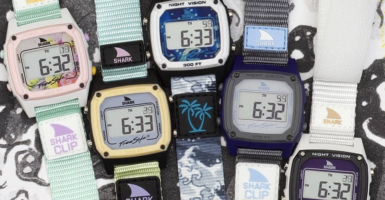How Much Do You Know About Life Of Bootsy Collins?
To the casual listener, William Earl “Bootsy” Collins might not be a household name. But chances are that you have danced to one of his bass lines at some point in your life. Gen X-ers may recognize Collins as the star-shaped sunglasses and elevator boots-wearing bass player in the famously psychedelic music video for Deee-Lite’s hit song “Groove Is in the Heart.” But well before millions of MTV viewers had his image burned into their brains from the video’s heavy rotation in the early ‘90s, Bootsy Collins was a legend for his unique sound and ability with an electric bass guitar.
Who Is Bootsy?
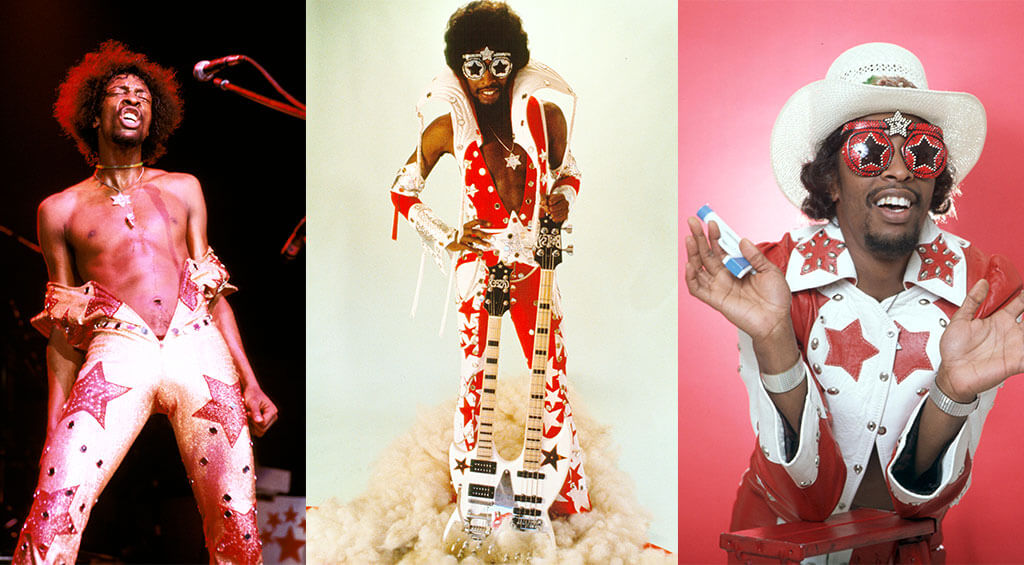
Bootsy Collins, self-described as “the world’s only rhinestone rockstar monster of a doll,” was born in Cincinnati, Ohio on October 26, 1951. Bootsy was the baby of the Collins family, a full eight years younger than his brother and future music partner, guitarist Phelps “Catfish” Collins. He got the nickname Bootsy from his mother, Nettie Lee Collins, because (as she put it), “you looked like a Bootsy.”
He showed an interest in music at a young age as he wanted to emulate Catfish and would sneak in practice sessions on his big brother’s guitar while he was away working his paper route.
Bootsy Got His Big Break With James Brown
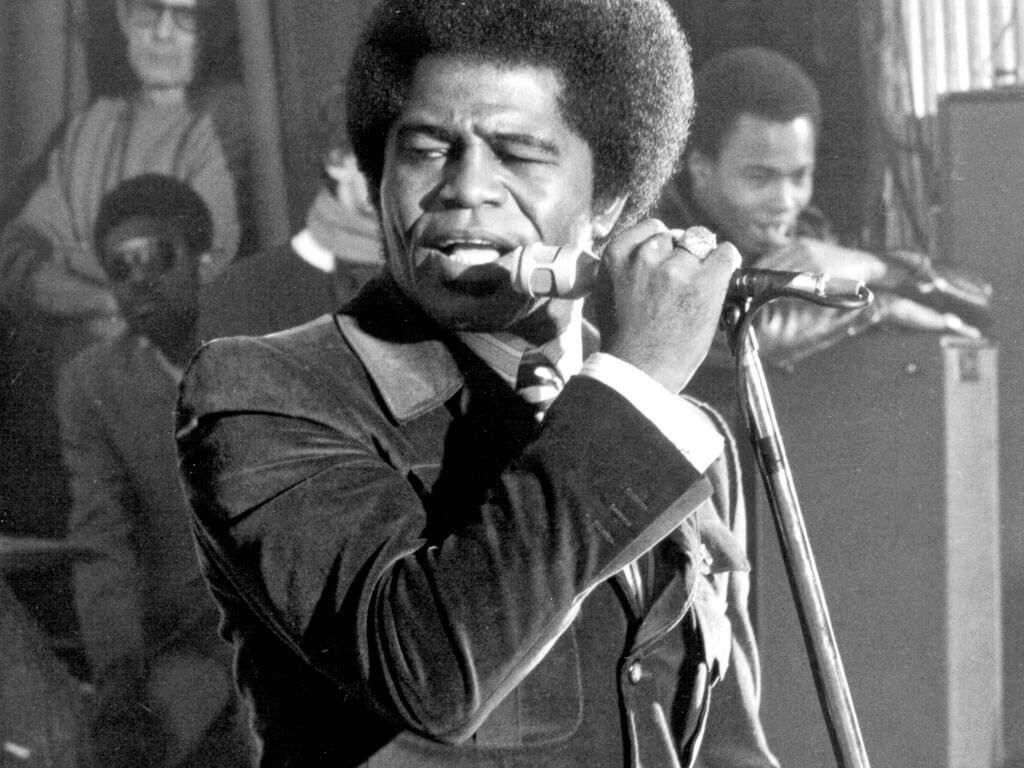
In the late sixties, Collins, along with his older brother Phelps “Catfish” Collins, formed The Pacemakers and were hired as the house band at King Records in Cincinnati, Ohio. Over time, their skills caught the ears of the Godfather of Soul, James Brown. Brown was famously tough on his backing bands, often docking a musician’s pay if Brown felt they were not performing up to his standards.
It may come as no surprise that Brown’s entire band quit after one such dispute over money. Bootsy got a call that night and the band was flown down to Columbus, Georgia on Brown’s personal Lear jet. That night one of the greatest backing bands of all time was born: The J.B.s.
He Was Always Grateful For Brown’s Influence
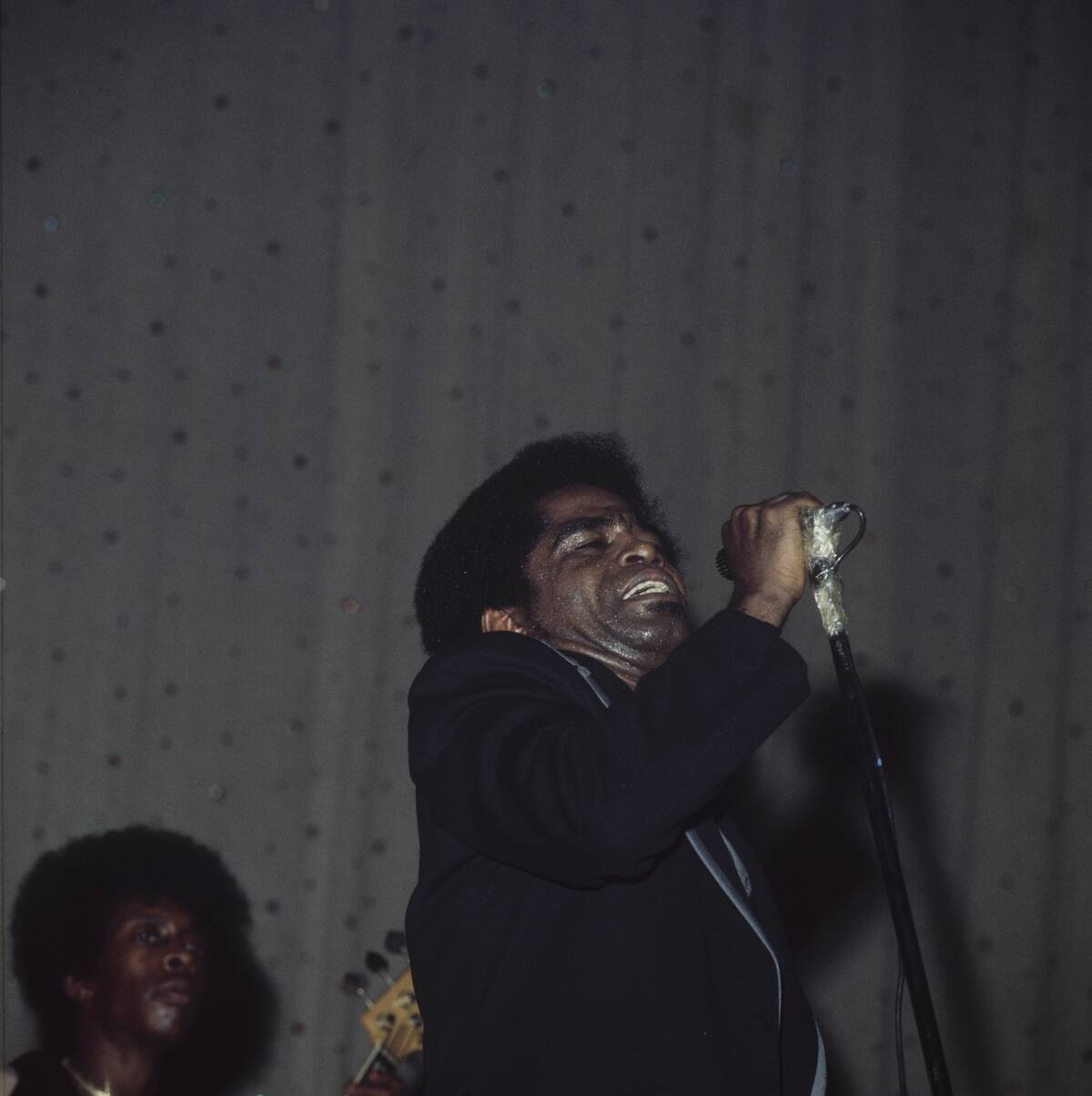
While Collins didn’t spend a particularly long time working with James Brown, he said that Brown “treated [him] like a son” during their brief time together, expressing warmth and gratitude towards the soul pioneer.
At times, Brown’s tutelage used negative reinforcement to make Collins a better musician. “I started figuring out his game, man,” Collins once said. “By telling me that I wasn’t on it, he made me practice harder. So I just absorbed what he said and used it in a positive way.”
The J.B.s Brought The Hits During Their Time With Brown
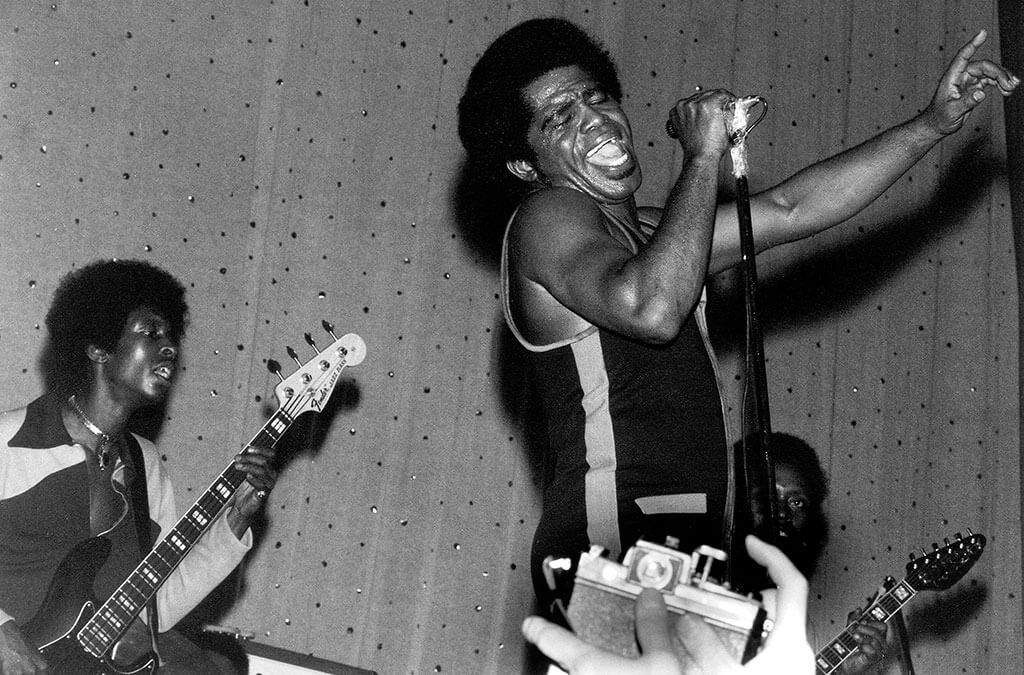
While the J.B.s remained as James Brown’s backing band until the early eighties, the Collins brothers were only with him for 11 months. But this period with the “original” J.B.s is often considered a high point in an already amazing career for Brown. It was during Collins’ tenure that such enduring funk classics as “Get Up (I Feel Like Being a) Sex Machine,” “Super Bad,” and “Soul Power” were written and recorded.
James Brown’s influence on Collins is unmistakable and he credits his mentor for teaching him the rhythmic power of “the one,” a musical concept that is the basis of funk music. We’ll learn more about “the one” and its importance to Bootsy later.
That Time Bootsy Took Acid Before A James Brown Show
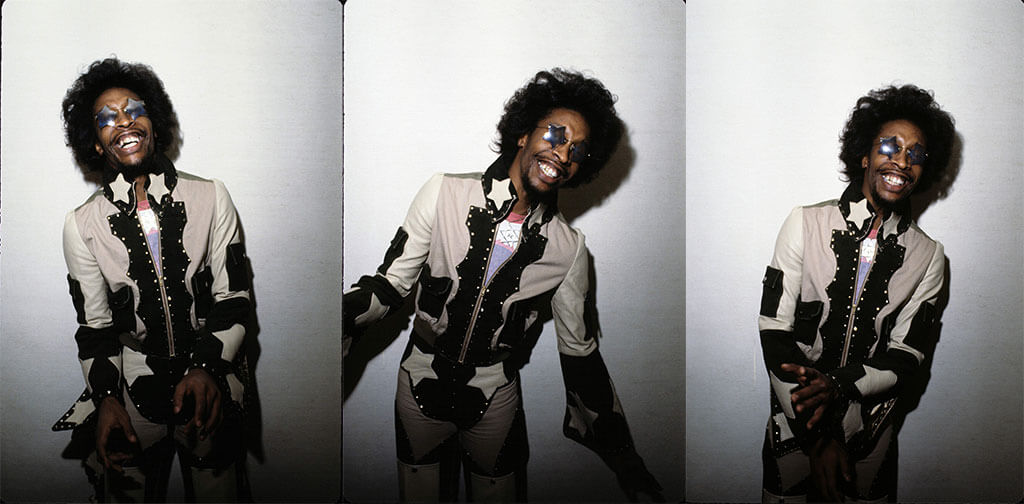
Bootsy and company eventually tired of Brown’s strict rule. One night he decided to take LSD before a live show and Brown was not pleased. In a Guardian interview, Bootsy recalled, “I promised myself I’d never do it during a show, but we had a father-son relationship, and he pestered me so much not to do it that one day I just did. My bass turned into a snake and I can’t even remember playing. After, he called me in the back room, as he always did, and was explaining how terrible I was – even when I wasn’t taking LSD.”
Collins could not keep a straight face during Brown’s lengthy criticism of his and was escorted out by a bodyguard. The next day as he explained to the band that they had quit this lucrative gig, they asked what was next. “Well, we go to Trailways and get on the bus back home. Then the next day we start practicing.” Collins explained in a June 2018 speaking engagement.
Eventually, Collins Parted Ways
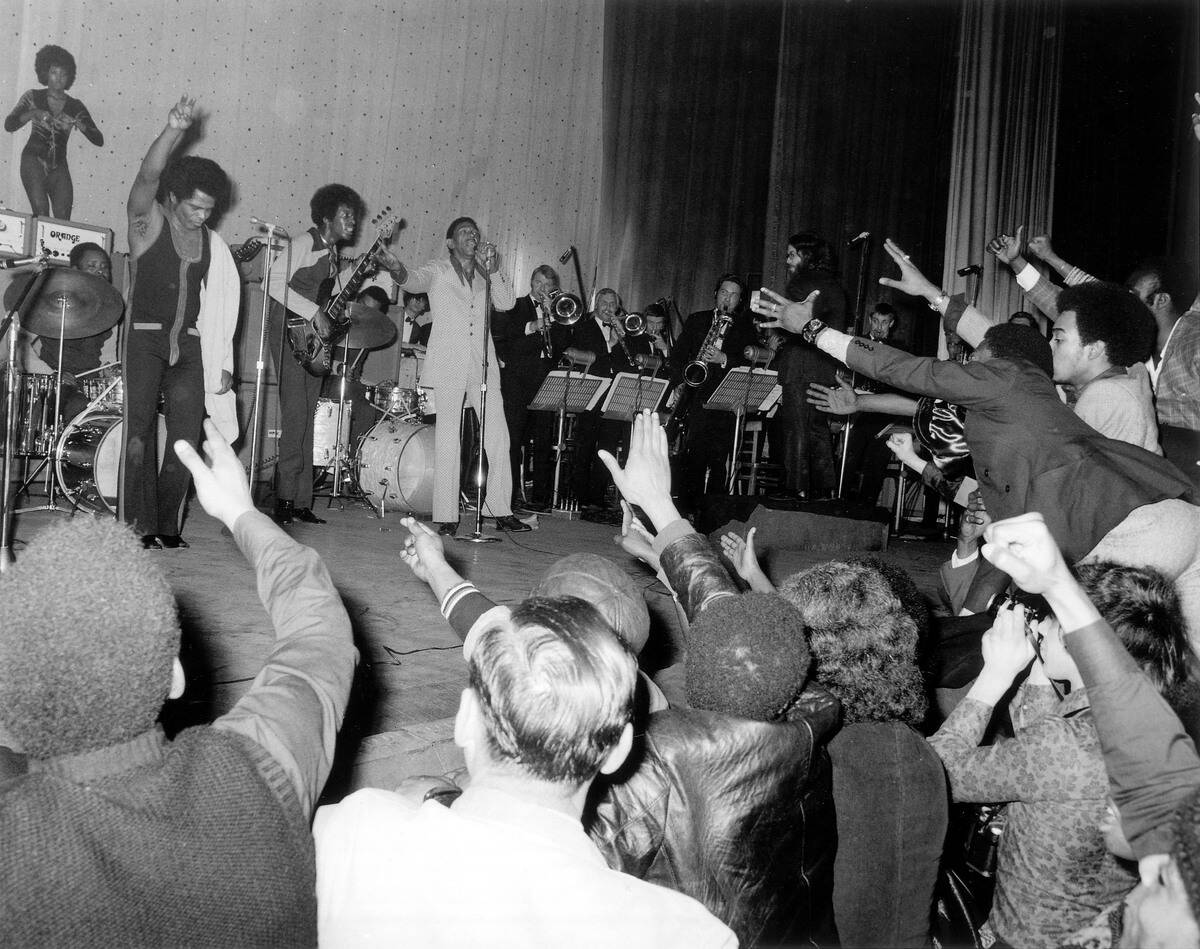
In the ’70s, after he’d split from James Brown, Collins returned to his hometown of Cincinnati to rethink his next steps. He teamed up with his brother Phelps Collins, along with Rufus Allen, Clayton “Chicken” Gunnels, Frankie Waddy, Ronnie Greenaway, and Robert McCullough to form The House Guests.
The House Guests were a short-lived funk group that served as a bridge for Collins’ career, but during their brief time together they produced several singles, with “What So Never The Dance” becoming a minor hit.
He Almost Joined The Spinners
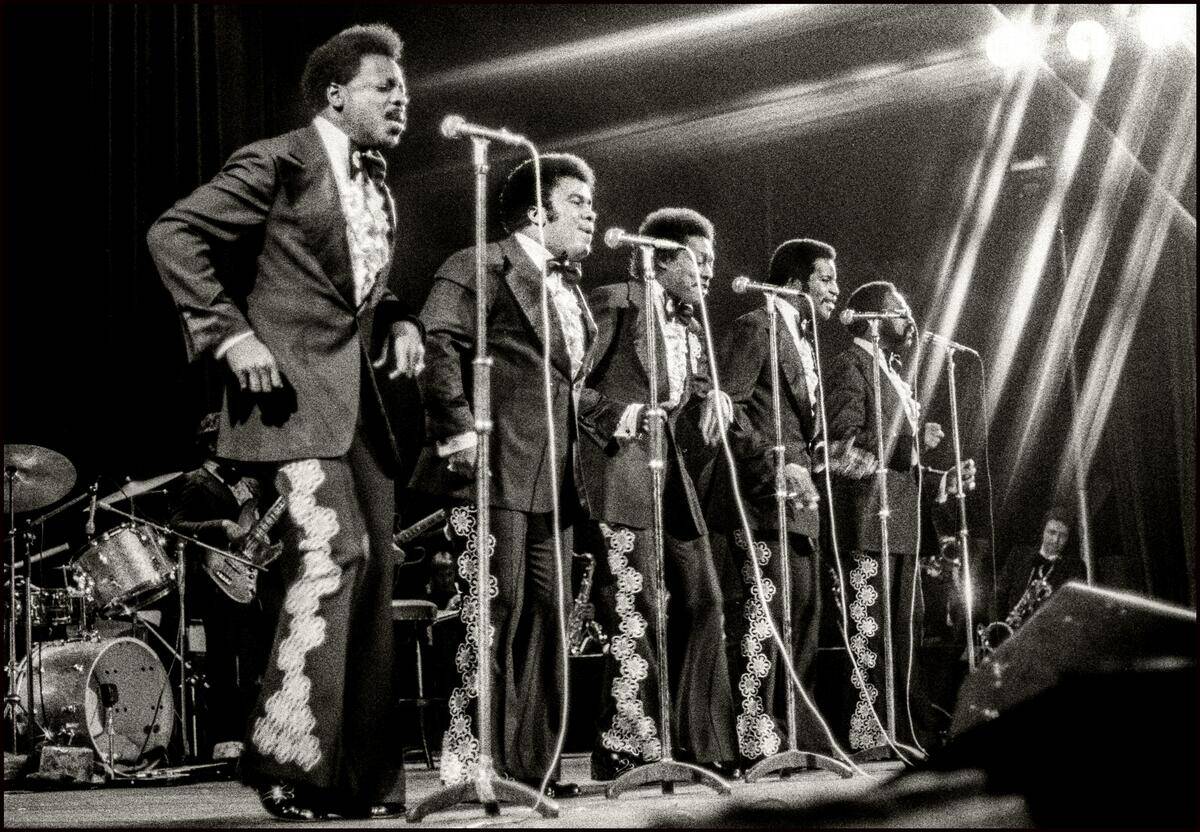
The Spinners, a long-running R&B group based in Detroit, had enjoyed success since the 1950s. After Collins’ time with the House Guests, he moved to Detroit and considered joining The Spinners.
While it was a tempting offer (it came from no less than Philippé Wynne, who had been singing for the group and who advocated for Collins), Collins opted to go in another direction.
Meeting George Clinton And Funkadelic
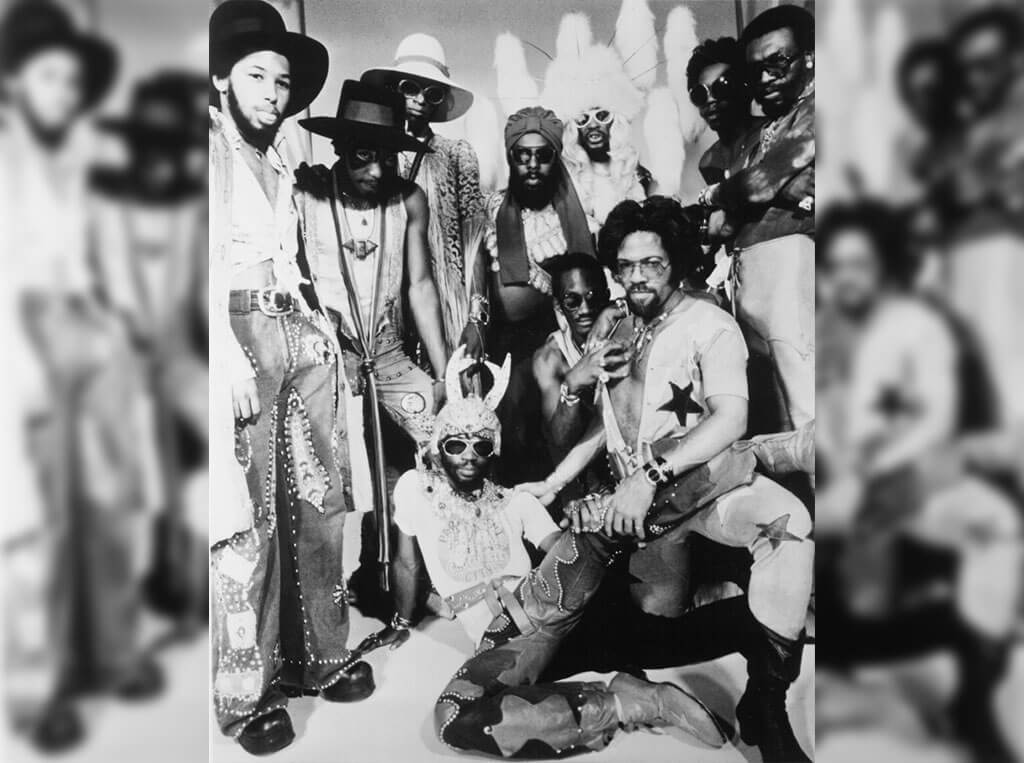
As Bootsy had been honing his chops with James Brown, a young songwriter/bandleader named George Clinton was already making a name for his soul outfit, The Parliaments, with the classic hit single “(I Wanna) Testify.” Both Collins and Clinton were independently developing their own unique styles that incorporated energetic stage shows as well as an otherworldly glam-funk fashion sense. The two had never met, however.
When Parliament-Funkadelic vocalist Mallia Franklin met Bootsy at a show in Detroit, she immediately took him to Clinton’s house. Bootsy detailed the meeting to The11thHour: “I looked over in the corner, and there was a guy with a white sheet on. He had black lights on him. He was the only thing lit up in the house. He had these Chicken feet on. I was like ‘Wow, that’s what I’m talking about.’ Big Yellow Chicken feet. I already knew, this was it.”
Joining P-Funk: The Mothership Takes Flight
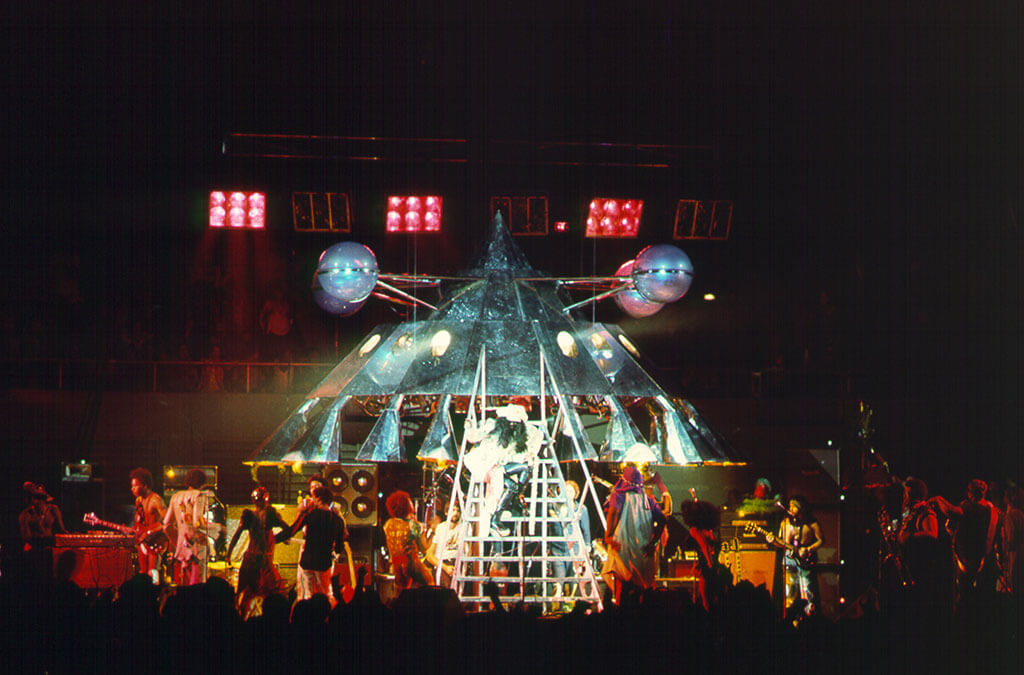
Collins and brother Catfish joined forces with George Clinton’s Parliament-Funkadelic collective in 1971 and were immediately incorporated into the P-Funk mythology. Ancient aliens, enlightenment through funk, and Armageddon were all part of the musical themes and visuals of live shows. Not to mention a full-sized alien “mothership” that would descend upon the stage. Bootsy’s alter egos, “Casper the Funky Ghost” and “Bootzilla,” added a light-hearted foil to Clinton’s more intense “Starchild” stage persona.
The chemistry on stage was also heavily influenced by the LSD that many of the members enjoyed on a daily basis. Collins reported to Guardian that he dosed every day for two years, “right up until the point I began feeling like I was living in another world.”
His Music Has Been Sampled By Eazy-E, Tupac Shakur, Beyoncé, and Childish Gambino
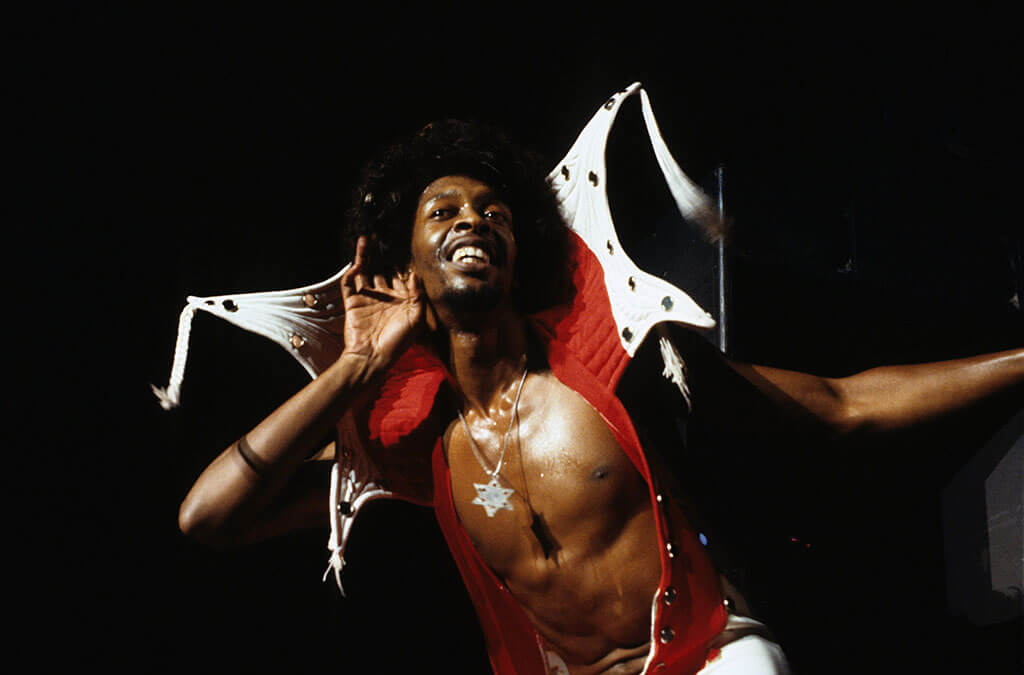
Bootsy’s unmistakable signature fuzz bass sound laid the groundwork for P-Funk’s otherworldly sound, but he is also a prolific songwriter. Collins has songwriting credits on many of Parliament-Funkadelic’s most memorable hits.
As a solo artist, he wrote the hit “I’d Rather Be With You,” which has been sampled by such performers as Eazy-E, Tupac Shakur, Beyoncé, and Childish Gambino. It is estimated that the song has been sampled in popular music at least 40 times.
That Bootzilla Style And Star-Shaped Glasses
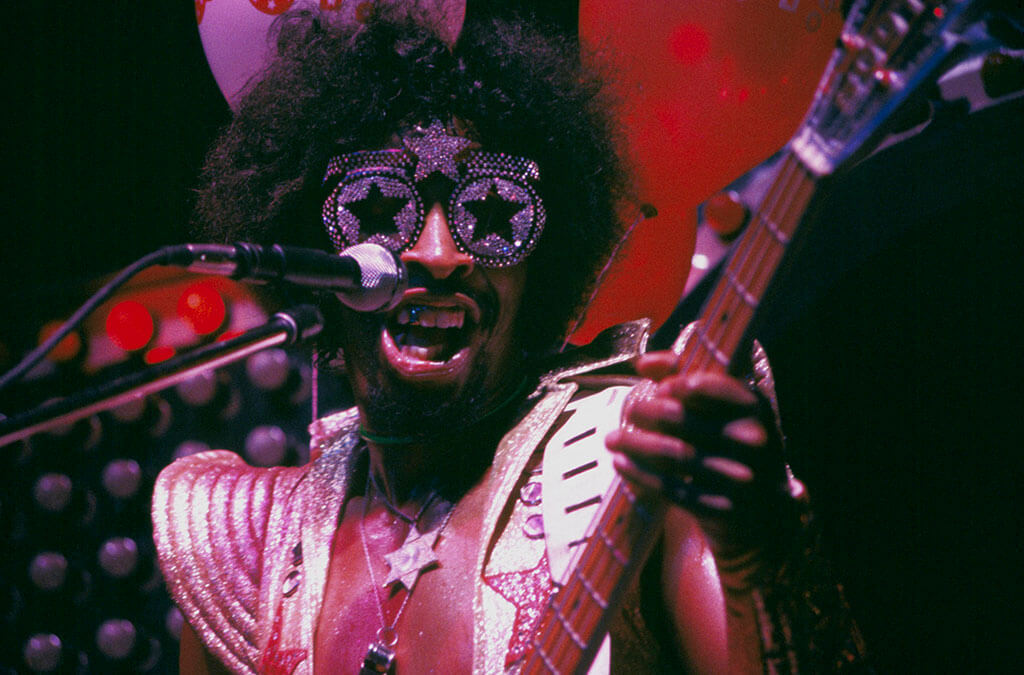
Bootsy Collins might be just as well known for his amazing style as much as his musical ability. As a child, he remembers drawing cartoon characters with star-shaped eyes. His early fascination with art as well as cartoon characters such as Casper the Friendly Ghost inspired him to develop his wild alien rock star “Bootzilla” stage persona.
Famously atop dizzying platform boots, covered in rhinestones and colorful leather, wearing a top hat and any number of star-shaped bass guitars, his most recognizable accessory might be his star-shaped sunglasses. If you were fortunate enough to buy an initial pressing of his album “Bootsy? Player of the Year,” in 1978, you would have found a cardboard replica of the iconic shades inside the sleeve.
Bootsy’s Rubber Band

In 1976 Bootsy, along with several key members of the P-Funk collective including his brother Catfish, diverged to form a side project, “Bootsy’s Rubber Band.”
They released four albums over the next three years. While they share the P-Funk sensibility when it comes to groove, The Rubber Band features Collins’ laid-back vocals prominently. It’s not hard to hear the influence of Jimi Hendrix’s soft-spoken voice in Collins’ delivery on songs such as “I’d Rather Be With You” and “What’s a Telephone Bill?”
He Released His First “Solo” Album in 1980
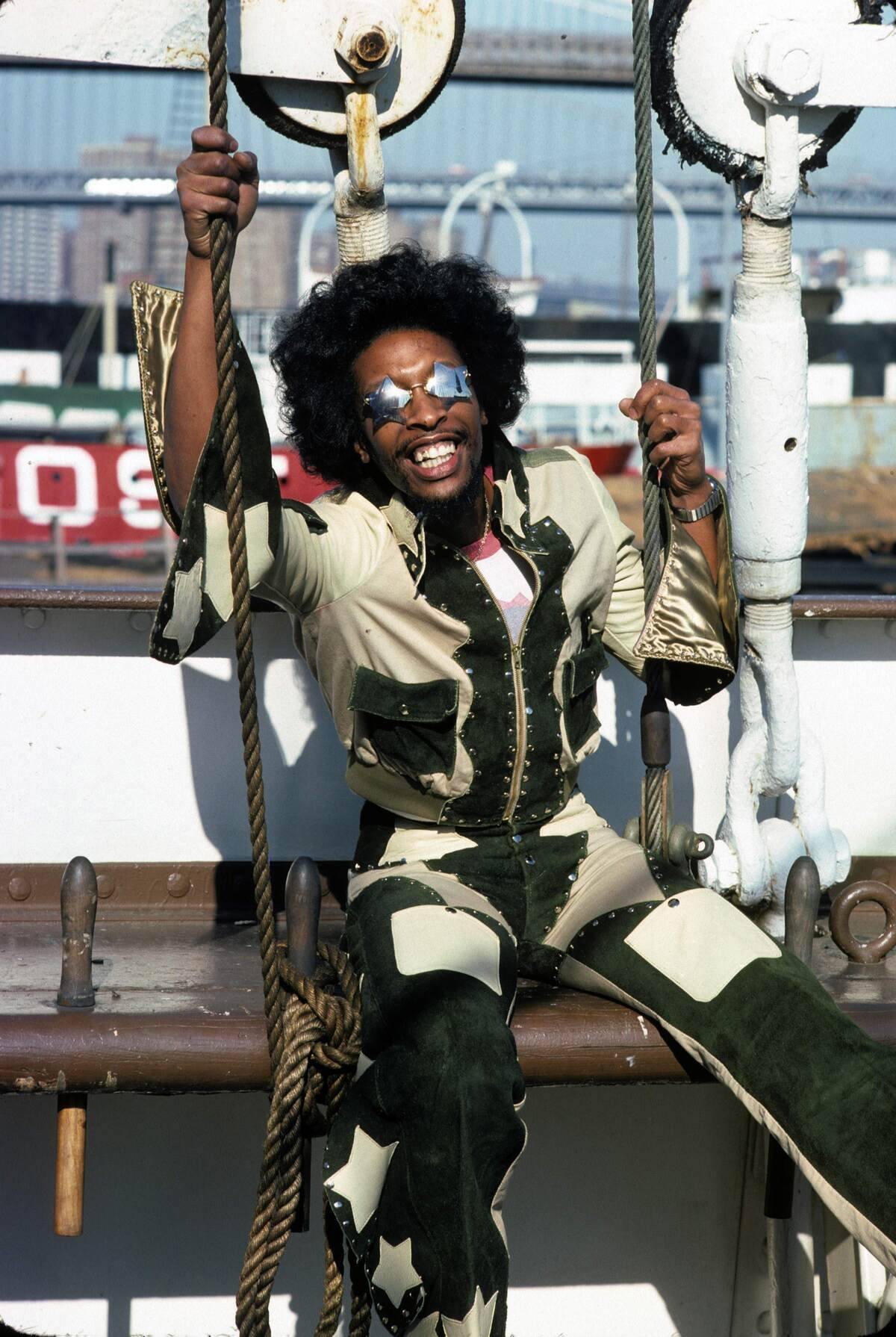
It’s tough to parse Collins’ musical output between solo albums and albums released as part of a collective, as he was the creative driving force for various groups throughout the ’70s and ’80s. But his first official solo album, Ultra Wave, was released in 1980.
The album was created along with a collective known as Bootsy’s Sweat Band (previous albums had been released with Bootsy’s Rubber Band), and was the first album credited solely to Bootsy Collins.
Bootsy Talks About Jimi Hendrix’s Influence
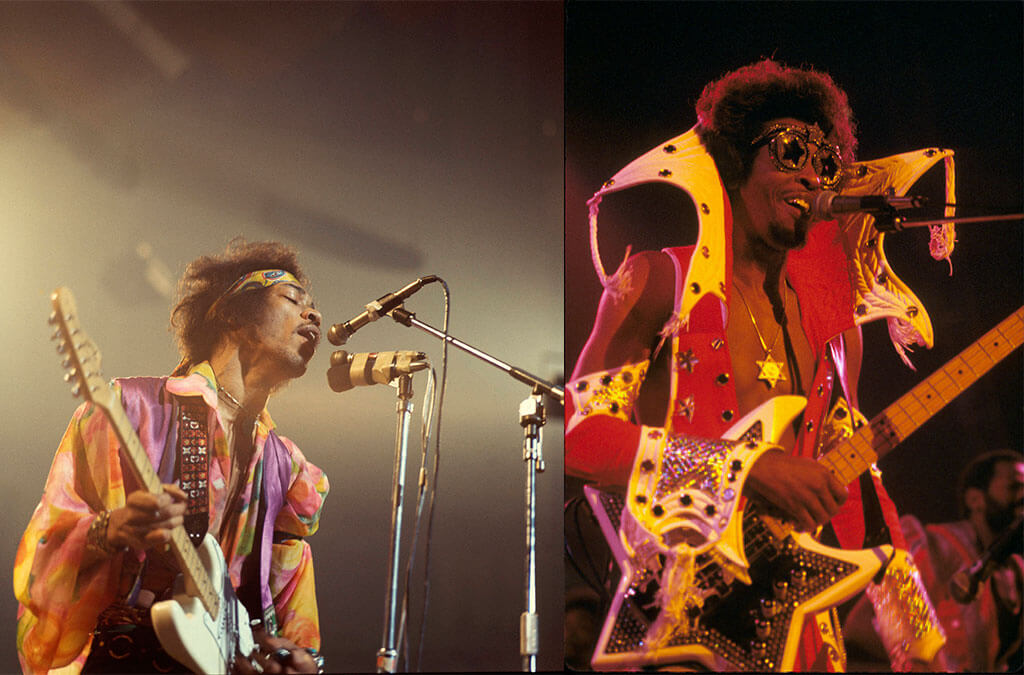
Collins was indelibly affected by the music of Jimi Hendrix. Also known as “Hendrix of Bass,” Collins and P-Funk keyboard genius Bernie Worrell (a lifelong musical collaborator) spoke about the incendiary guitar player’s influence on them in a 1995 documentary.
Worrell simply stated that to try and put Hendrix’ legacy into words is “belittling,” but that he was a gift from God, and “supernatural.” Bootsy elaborated: “When I started hearing what he was doing with guitar, I started wanting to do what Jimi Hendrix was doing with the bass.”
Bootsy On ‘Jaws’ And Quitting Substances
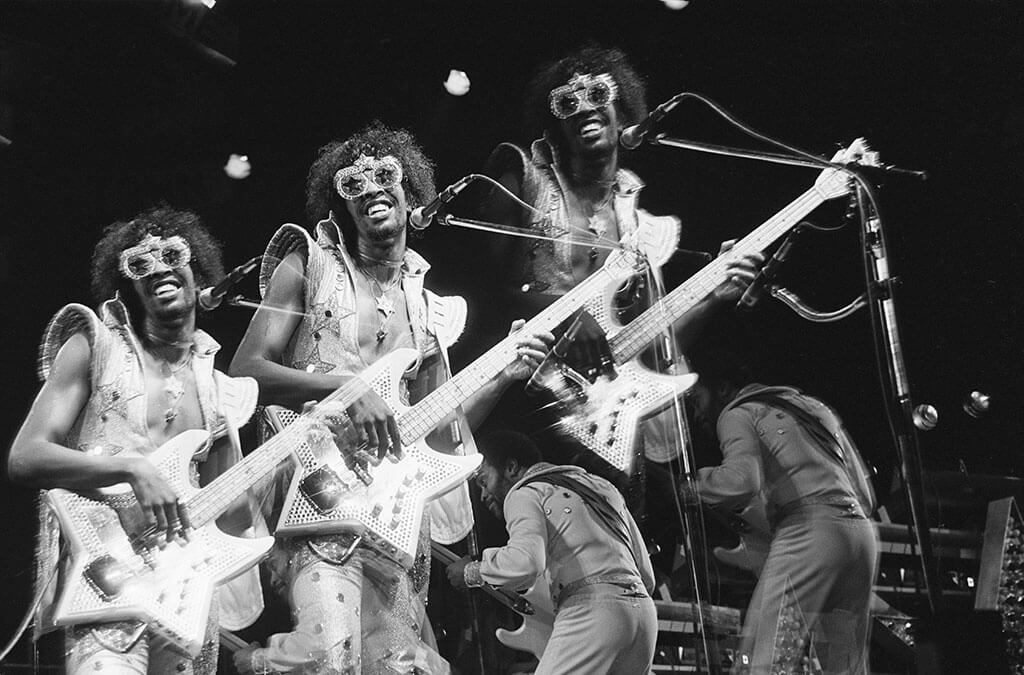
Collins admits that heavy LSD usage in the early days probably opened his mind to a new level of creative expression, but would not recommend it to others. According to a Rolling Stone interview, Collins credits a 1979 flight on a supersonic transport (SST) plane, mixed with a hit Steven Spielberg film for the extra push to kick the habit. He was excited to take the fast ride to Europe, but the jet lost all its engines 45 minutes into the flight, over the Atlantic Ocean.
“[Y]ou just heard this big boom. . . . I saw a big flash of fire come from one of the motors. We were going straight down. . . . And not only that, I had just come back from the movies watching Jaws. I was like, ‘Oh, my God, Jaws, I’m coming to see you.’ . . . I made all these promises to God, like, ‘If you get me out of this one, Lord, help me. I promise I won’t take no more.’”
He Collaborated with Jerry Harrison

Throughout his career, Collins was never afraid to get experimental and collaborate with musicians and producers from various genres. In 1984, he got together with Jerry Harrison of Talking Heads and the Modern Lovers to create “Five Minutes.”
The track, truly a product of its time, sampled a Ronald Reagan speech. While the collaboration only produced this singular track, the team of Collins and Harrison was known as “Bonzo Goes to Washington” (a play on Reagan’s role in the 1951 film Bedtime for Bonzo, which was also referenced in a Ramones song the following year).
‘Groove Is In The Heart’ With Deee-Lite
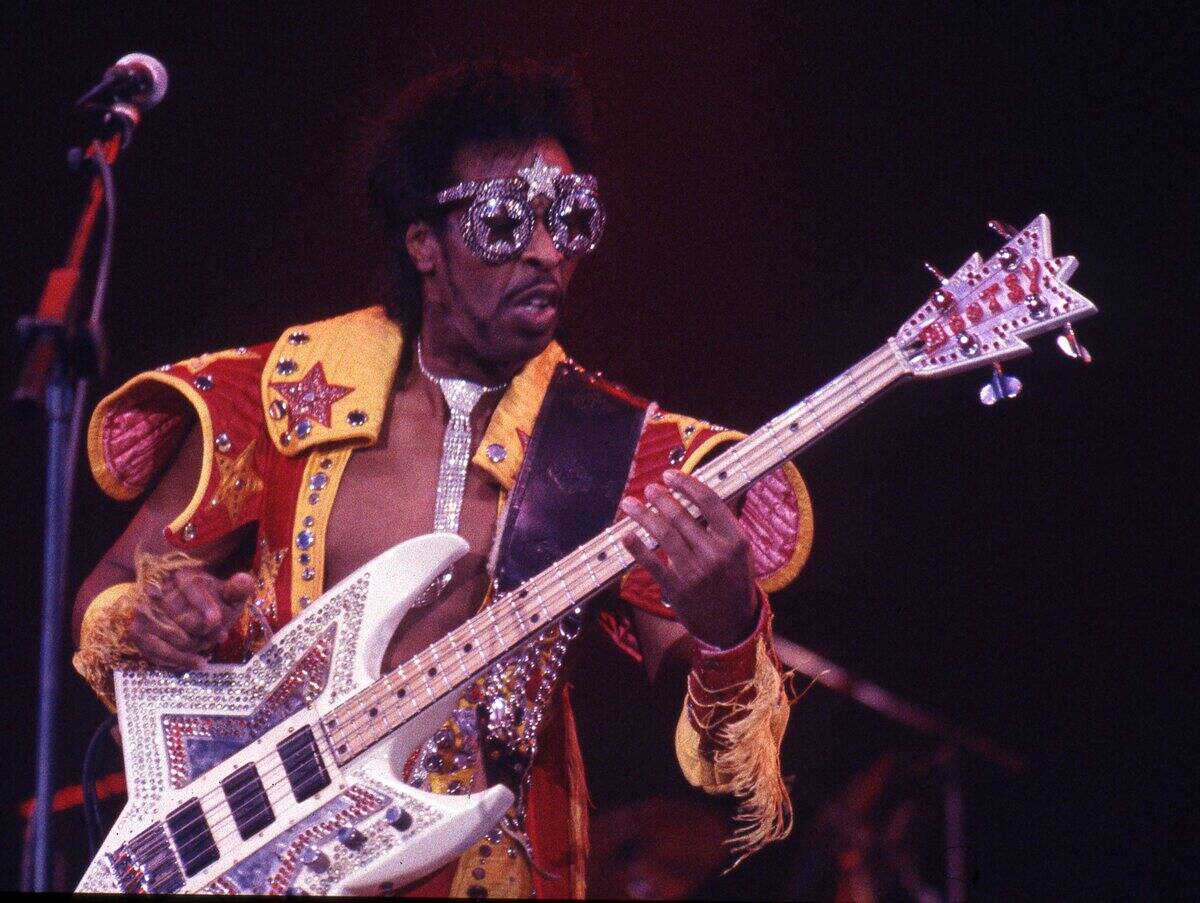
Bootsy famously appeared in the music video for Deee-Lite’s hit single, “Groove Is in the Heart” (now over a quarter of a century old!), but this is one instance where he did not actually write the bass part. The catchy bassline was originally sampled from the Herbie Hancock song “Bring Down the Birds,” that appeared in the late sixties cult thriller Blow-Up, and was later performed by Collins when Lady Miss Kier and company recorded their first album.
DJ Dimitry sent Bootsy a recording of the song and he immediately agreed to join the session, bringing in additional P-Funk alumni Maceo Parker and Fred Wesley to perform the horn breakdown.
1988 Was a Banner Year

Collins took a step back in the mid-’80s, but returned in a big way in 1988 to create a new album, What’s Bootsy Doin’? He also collaborated with Herbie Hancock in his release Perfect Machine.
On both albums, Collins showed a forward-thinking vision of music to come. While Perfect Machine featured the jazz-driven techno that Hancock was known for, Collins’ solo record marked a significant departure for him, with hard-driving dance tunes that wouldn’t be out of place in the ’90s.
He Worked With Even More Legends in 1988
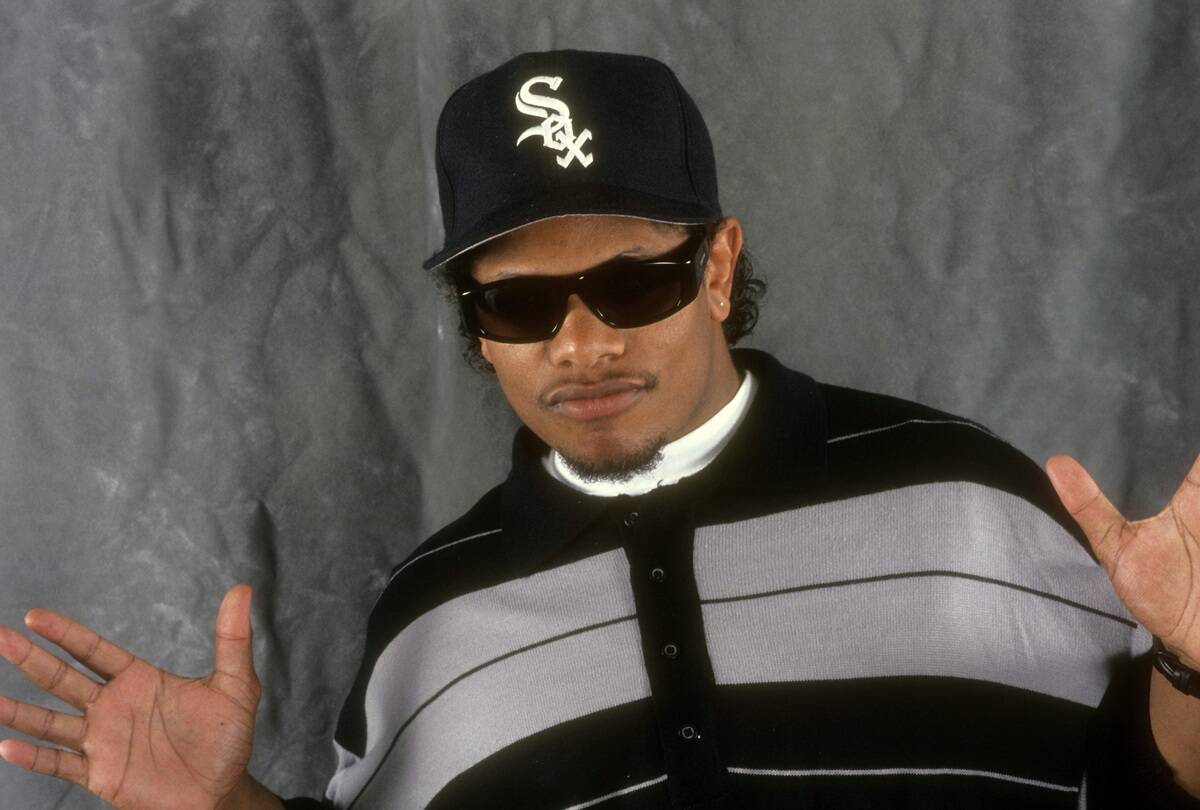
Collins got together with Rolling Stones guitarist Keith Richards in 1988, playing bass on the Keith Richards and the X-Pensive Winos album Talk is Cheap.
From working with a legendary rock musician to an up-and-coming rapper, Collins also made a cameo appearance in the music video for Eazy-E’s “We Want Eazy.”
Prince Inducted Bootsy Into The Hall Of Fame
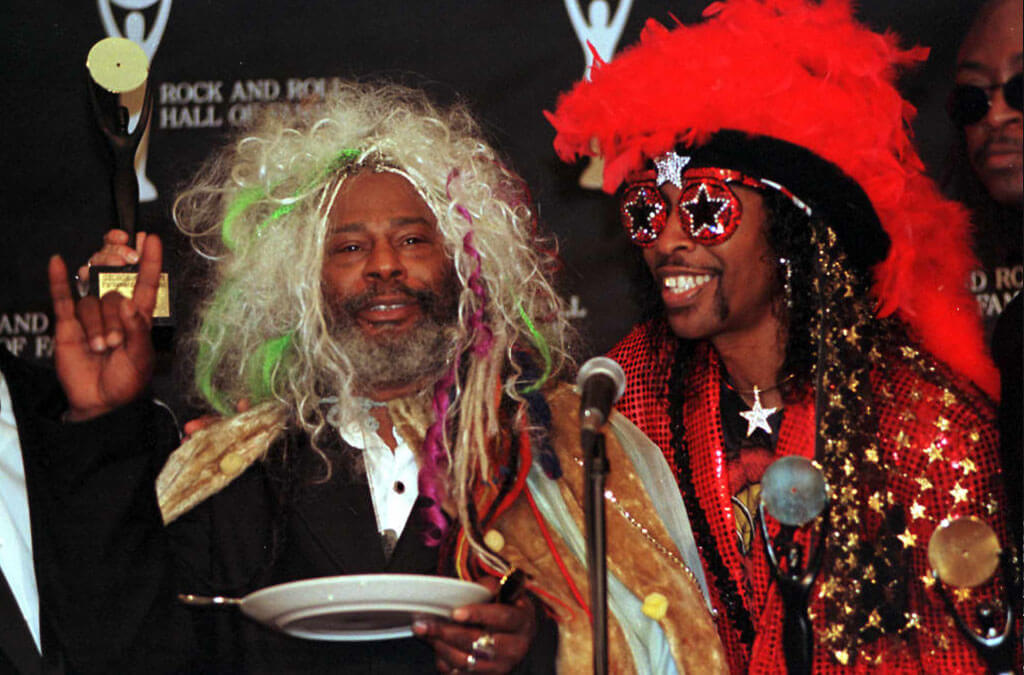
In 1997 Collins, along with George Clinton and other members of the classic Parliament-Funkadelic line-up, including guitar hero Eddie Hazel and keyboard genius Bernie Worrell, was inducted into the Rock and Roll Hall of Fame by another legendary music innovator: Prince.
P-Funk’s influence on Prince’s music and personal style cannot be understated as his introduction that night indicated: “They built Parliament Funkadelic and changed the world. There was something futuristic about Parliament Funkadelic and that was only fitting since they played a huge role in creating the future of music.”
He Was a Big Part of One of 2000s’ Biggest Tracks
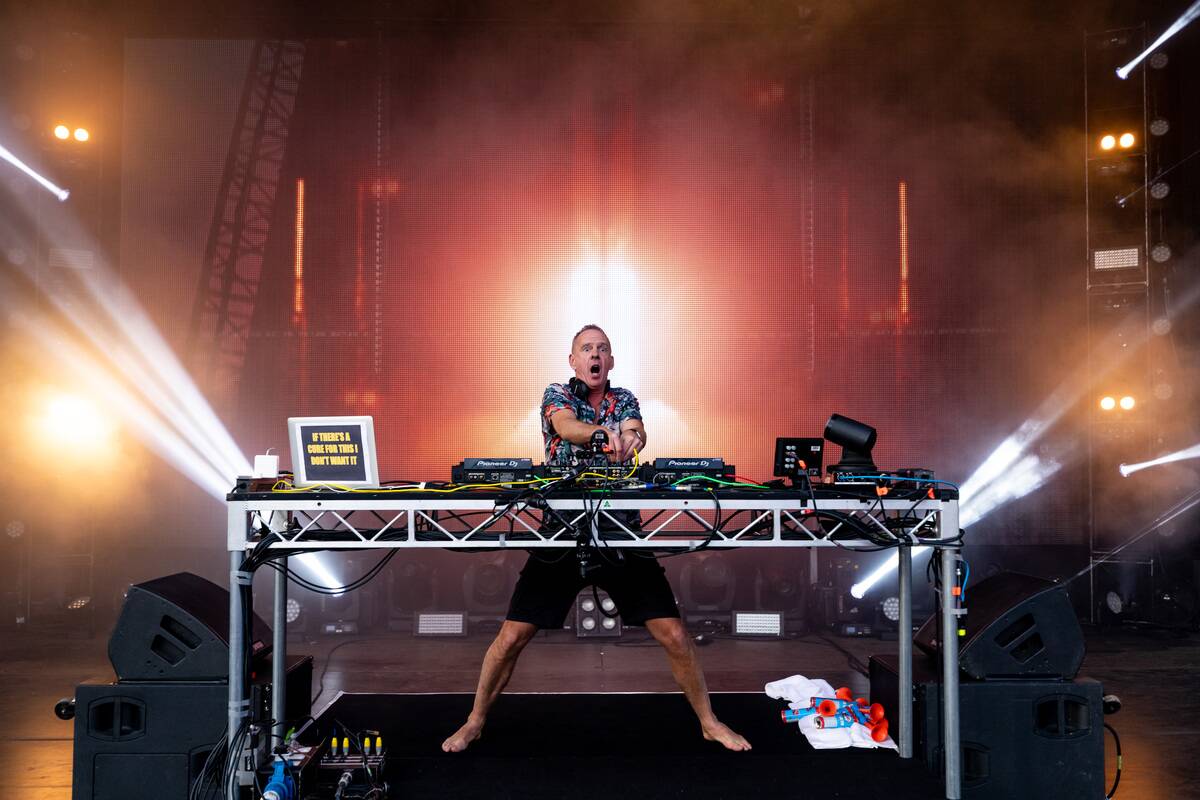
English DJ Fatboy Slim was a major hitmaker in the late ’90s and early 2000s, with his sample-heavy big beat tracks regularly topping the charts. For his 2000 track, “Weapon of Choice,” he tabbed Collins to provide lead vocals.
For his vocals, Collins repeats a refrain from the novel Dune: “Walk without rhythm and you won’t attract the worm.” The song was a massive worldwide hit, winning multiple MTV Video Music Awards along with a Grammy for Best Music Video.
Losing Prince
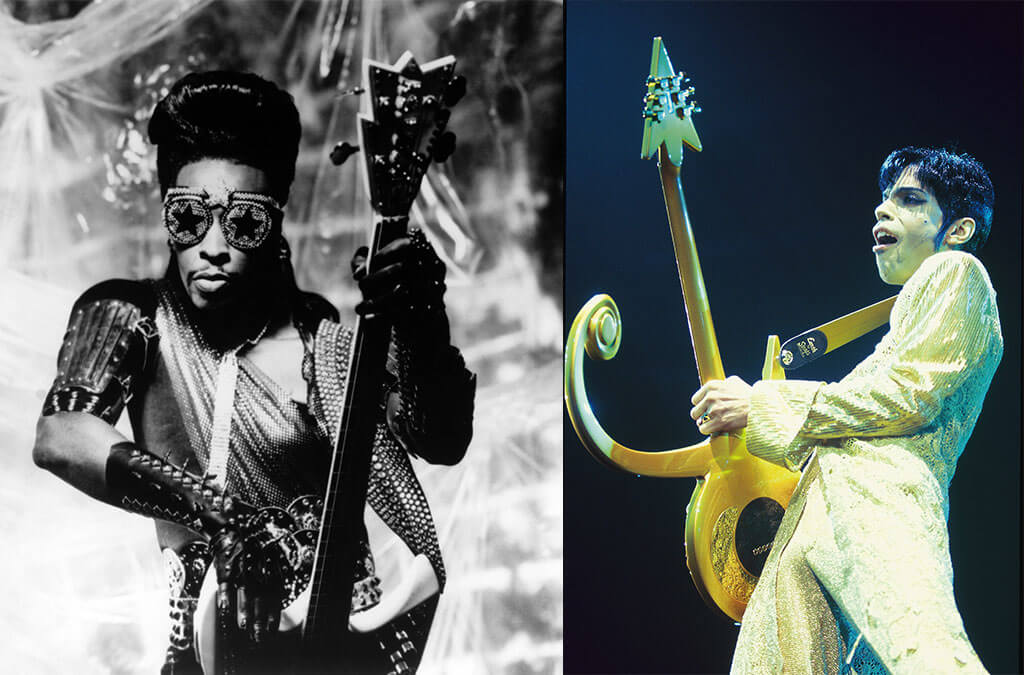
When Prince died on April 21, 2016, Bootsy tweeted “Say it ain’t so, but it looks like it is. Our ‘Prince’ has evolved into another frequency of Love & Life…” The artists had become good friends in the seventies when they both joined the same record label.
In an interview soon after Prince’s death, Collins admired his prowess in both the business and music world. Describing the scene at a show Collins played in the seventies before Prince was a household name, Bootsy recalled: “He ran on stage like he was Prince, but didn’t nobody know him, so my bodyguard took him and threw him in the audience, and we was like ‘that’s Prince’”
Brother Phelps “Catfish” Collins Was An Inspiration To Get Into Music
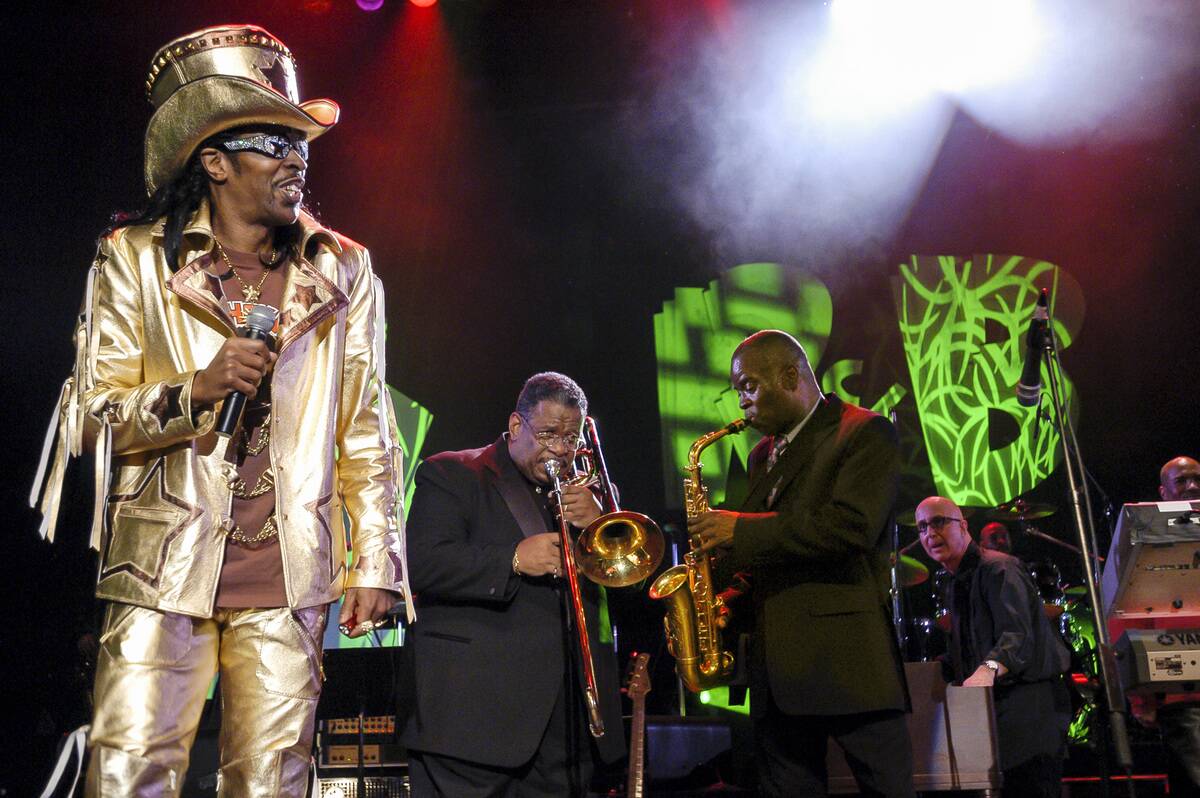
Bootsy’s older brother Phelps “Catfish” Collins was a talented guitar player in his own right and helped to define and expand what the funk guitar could do. He was the inspiration for his little brother’s attraction to music. Young Bootzilla saw how much fun Phelps was having playing music as well as how much attention he garnered from the local girls.
Bootsy was so determined to play that he built a bass out of a standard 6-string electric guitar so that he could join his brother’s band. As he told NPR, “I said well, if you give me four strings . . . I will have a bass. And I made a bass out of that guitar and that same bass that I played with [Catfish] that night was the same bass that I played the way up until we got with James Brown. That’s funk making something out of nothing.” Sadly, Catfish died of cancer in 2010.
He Showed Some Love to His Hometown Team
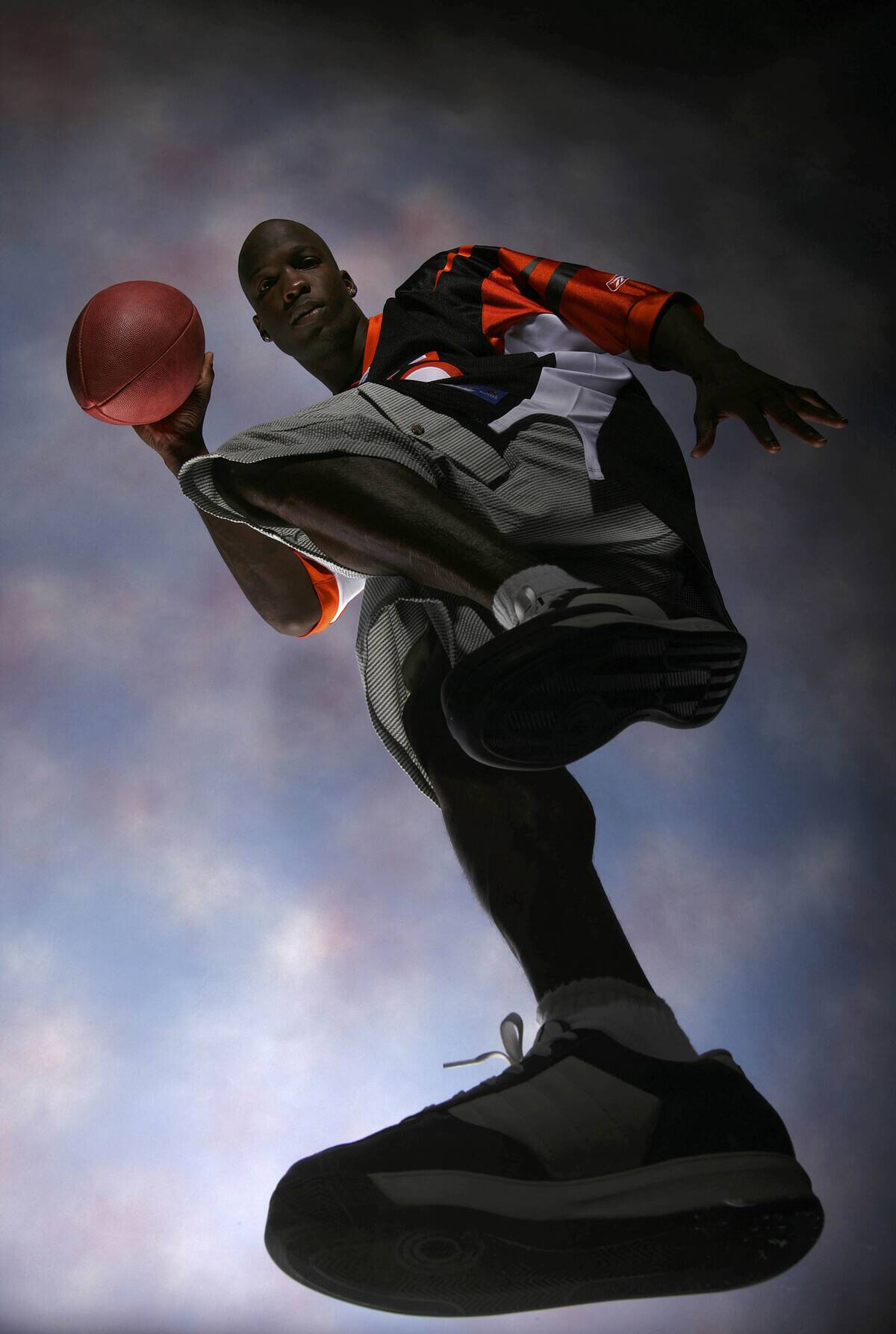
Collins, a Cincinnati native, has always maintained close ties to his roots in southern Ohio, and in 2005 he co-wrote a song paying tribute to the Cincinnati Bengals of the National Football League.
The song, called “Fear the Tiger,” features guest vocals from Bengals players Duane Clemons, Stacy Andrews, and Ben Wilkerson. The following year, in 2006, Collins appeared with other musicians in the intro for Monday Night Football.
Bootsy Collins Foundation

In 2011 the Bootsy Collins Foundation was established with a mission “to inspire, educate, and enrich the lives of individuals from all backgrounds.” According to a recent interview with Collins in Billboard magazine, what this really means is, “Say it loud: An instrument for every child.” He credits music class for keeping his interest in other subjects, “and worth going through math and science.”
Collins and his wife Patti run the Foundation, which has additional programs dedicated to dental care awareness and female empowerment and self-esteem through music and the arts. BCF has also put on benefit concerts for a variety of community needs, including disabled veterans and musicians in need of support.
He Had A Cartoon Called ‘The Name is Bootsy, Baby’
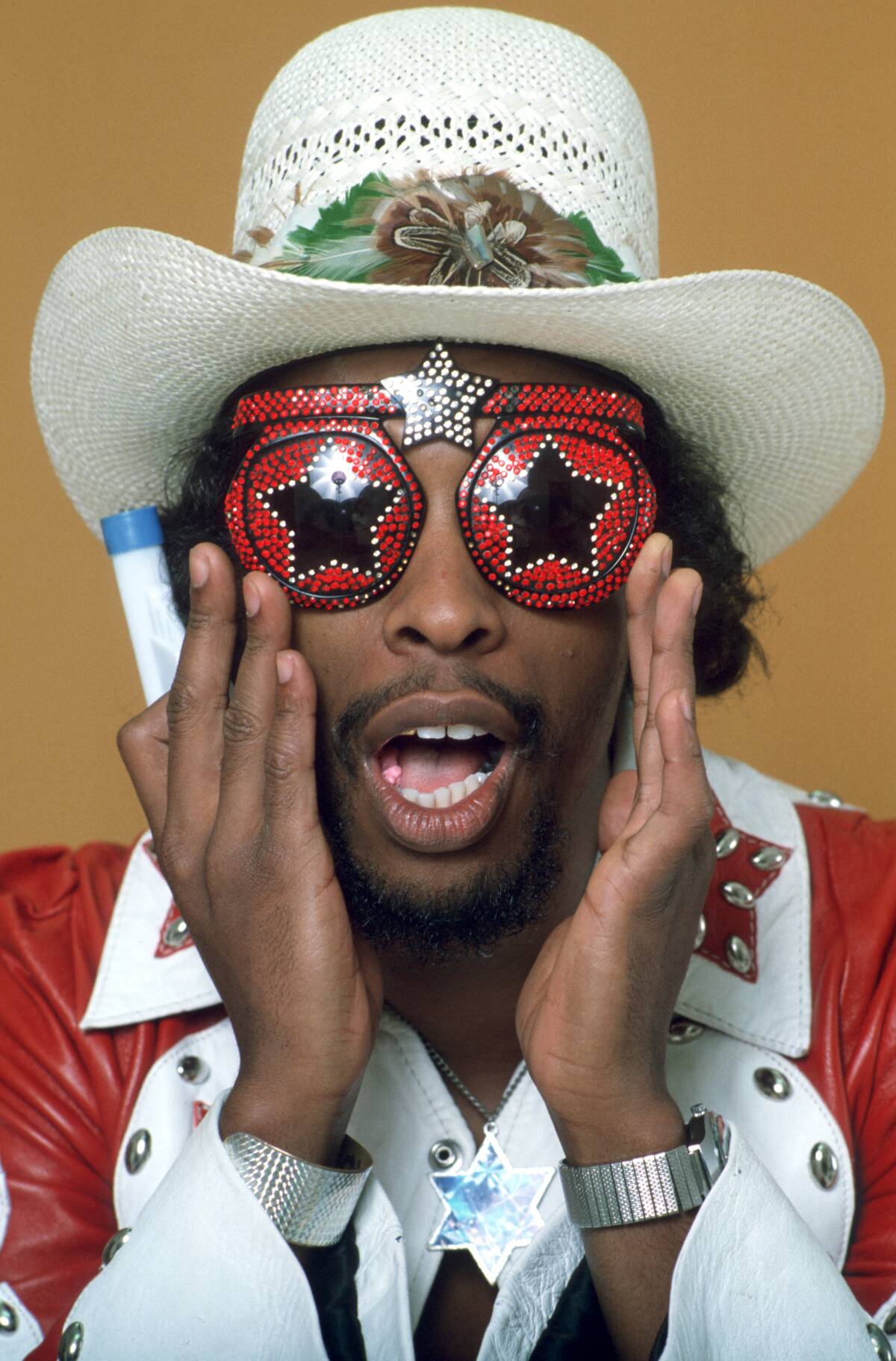
While the pilot for Bootsy’s 1996 cartoon, The Name is Bootsy, Baby, was never picked up as a series, it was a serious attempt to bring Collins’ special style and the P-Funk mythology to the “Liquid Television” generation. Mike Judge of Beavis and Butthead fame provides some of the voices and Bootsy played himself.
The intro gives us a taste of what might have been in future episodes, with Bootzilla surfing through space on his star bass, sucker-punching an entire school of sharks, and defeating a horde of medieval knights and a pink dragon. It is definitely worth a watch if you have ten minutes to see what could have been.
SNL Referenced Bootsy in 2011
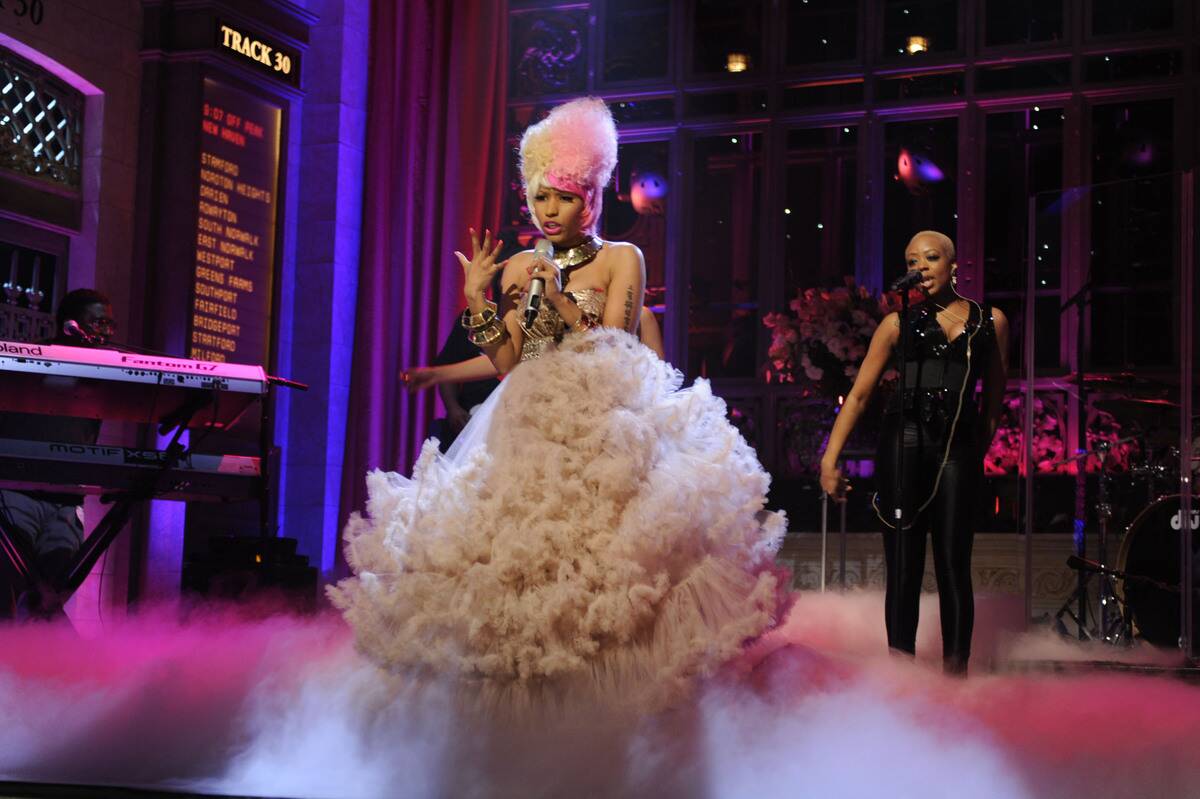
A 2011 episode of Saturday Night Live may not have featured Collins as host or musical guest, but one of its skits was a direct reference to the funk pioneer.
One sketch, featuring cast members Jay Pharoah and Kenan Thompson, along with host Jesse Eisenberg and musical guest Nicki Minaj, referenced the fictitious movie Bride of Blackenstein. In the skit, Pharoah’s performance as Dr. Blackenstein apes Collins’ unique style. There’s also the fact that the movie is a reference to the Parliament album The Clones of Dr. Funkenstein.
2017 Album: Worldwide Funk
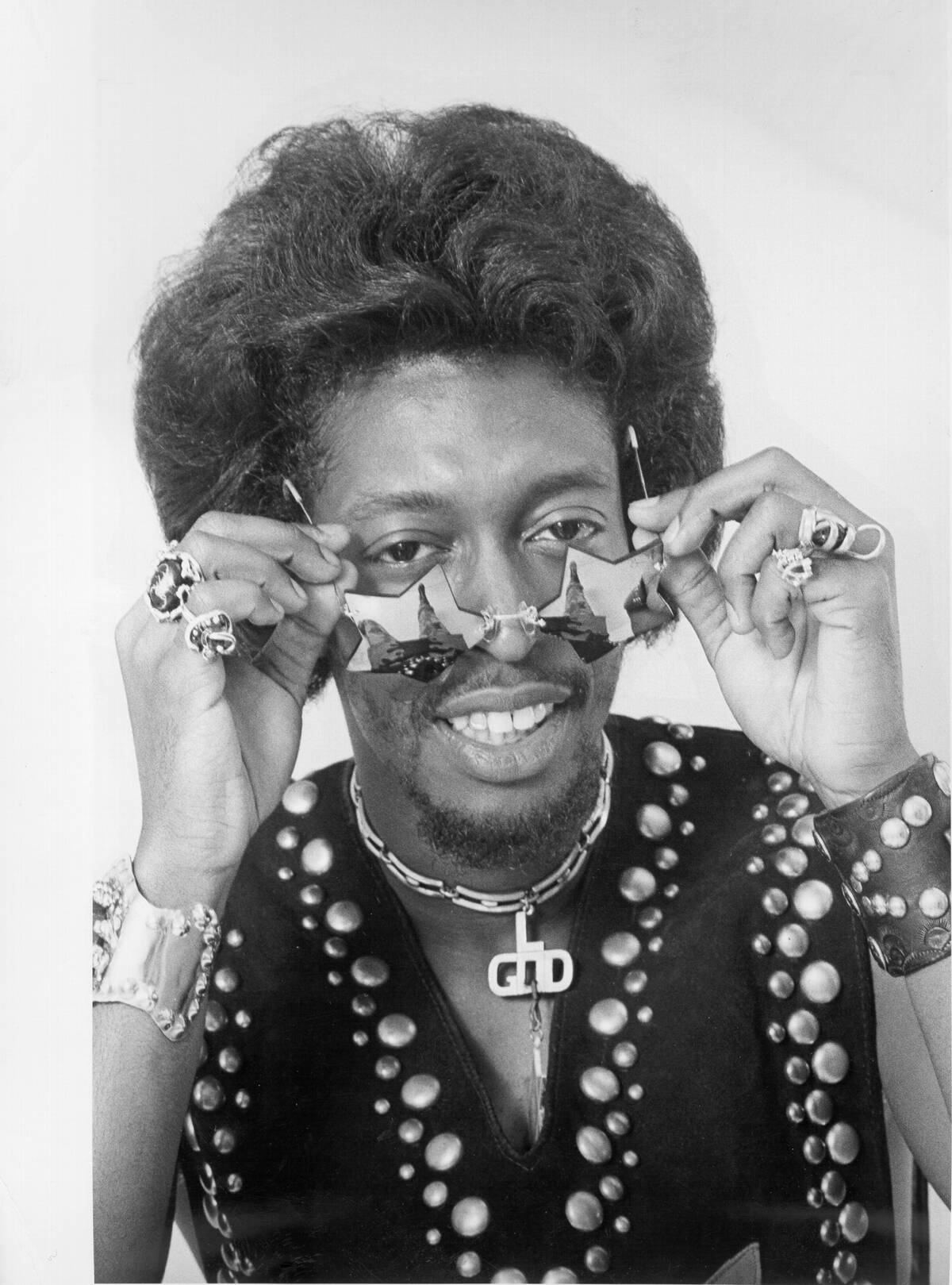
Collins’ 2017 album, Worldwide Funk, continues the genre’s evolution with a younger generation of players contributing to the tracks. But it’s not without a nod to his past. The song “Salute to Bernie” is a tribute to his longtime P-Funk songwriting partner, Bernie Worrell, and contains previously unheard tracks from the late keyboard player. Established stars like Snoop Dogg, Chuck D, Buckethead, Stanley Clarke, Big Daddy Kane, and Doug E. Fresh make notable contributions on the album.
There are plenty of emerging artists too, such as The Blvck Seeds, Tyshawn Colquitt, Kali Uchis, Justin Johnson, and October London. Collins was a gracious host for the younger artists: “They were wild and crazy about the opportunity to be with me and they’re feeling like they ain’t nobody yet, and I’m saying, ‘You are.’”
Backstage With George Clinton
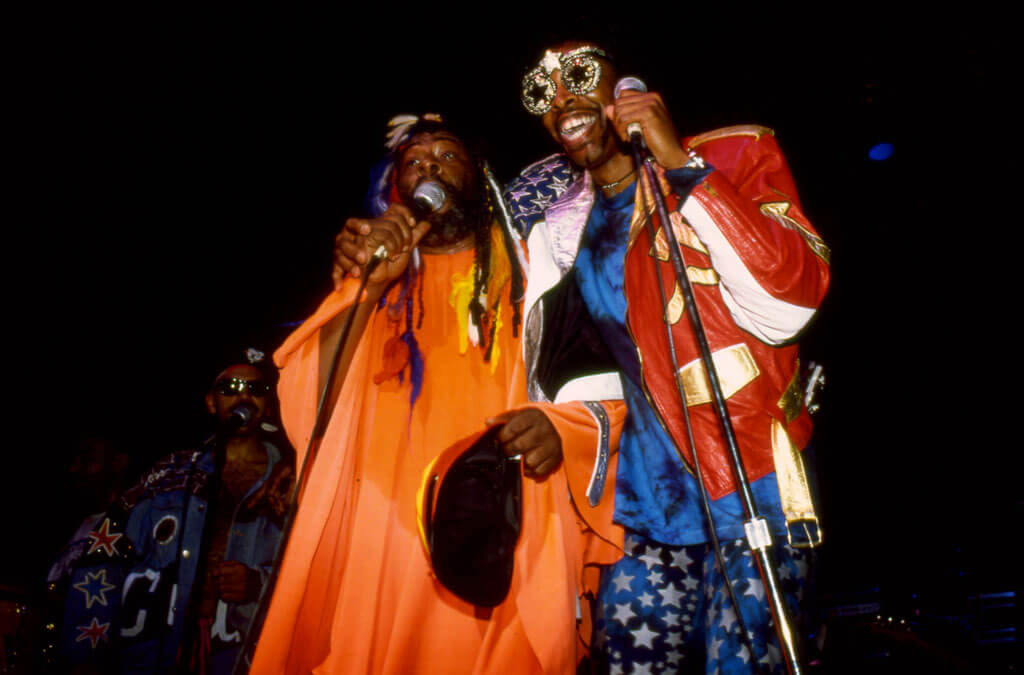
At a speaking engagement, Collins relayed some stories from the early days touring with the Parliament-Funkadelic collective when he and his partner-in-crime, George “Starchild” Clinton, frequently shared accommodations after the show. Female fans would make their way backstage and knock on the dressing room door. Clinton would answer, only to discover that the women were looking for Bootsy. Yet without his glam-alien garb, the fans did not realize who they were speaking with.
Clinton would do his best impression of Collins’ smooth drawl, “it’s Bootsy, baby,” and would leave with the groupies as Collins, sitting on the bed and working on new material, watched in disbelief. “Man, I’m right here!”
What Is ‘The One?’
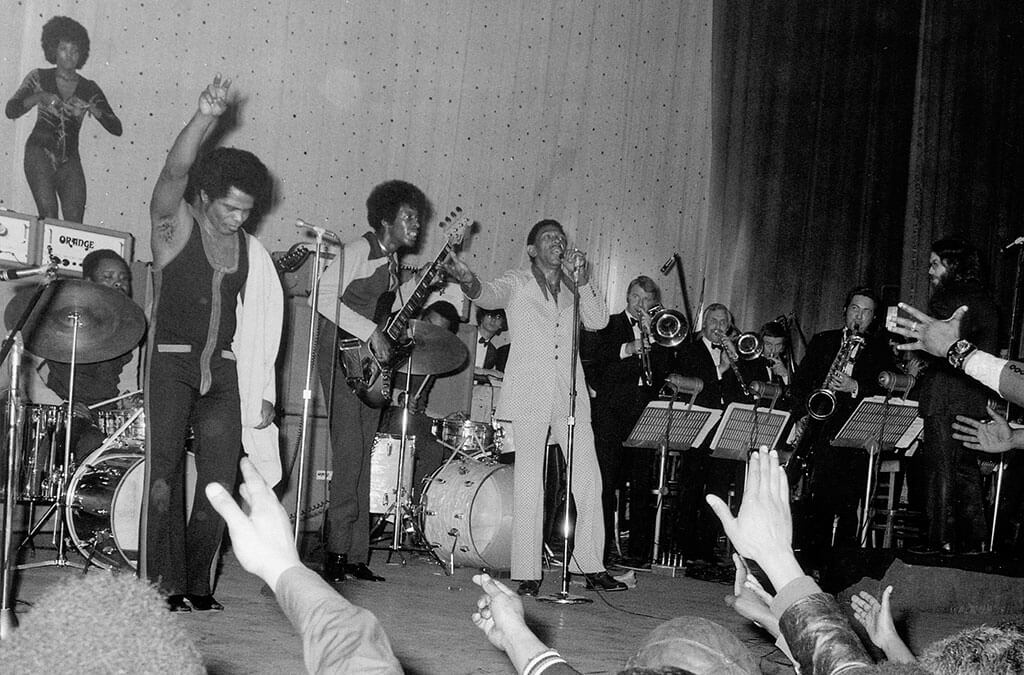
James Brown turned young Bootsy onto the concept of “the one.” Musically, this means that Brown required emphasis on the first beat of a four-beat count to develop his trademark sound and create the rhythmic environment to groove to (listen to Brown’s earlier hits “Papa’s Got a Brand New Bag” or “I Got You (I Feel Good)” to get an idea of the one sound).
Collins also sees “the one” as a spiritual concept. In an interview with Afropunk, he explained, “Everything has to go back to its roots, its maker, its beginning. The Funk is the start up program for everything.” He continued, “We all will go back to the ‘ONE’ No matter what style we possess or un-worldly possessions we profoundly produce.”

